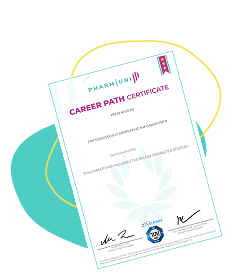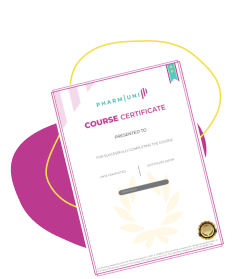
In today’s world, businesses are increasingly recognizing the importance of sustainability, not only in terms of environmental impact but also in the way they operate and engage with their employees. The role of Human Resources (HR) in driving sustainability initiatives has become more prominent than ever before.
By incorporating sustainable practices into HR strategies, organizations not only reduce their carbon footprint but also enhance their reputation as responsible employers.
This article will delve into various ways HR professionals can contribute to sustainability, such as implementing green recruitment practices, promoting employee wellness programs, and fostering a culture of environmental responsibility. We will also discuss the benefits organizations can reap from prioritizing sustainability, including improved employee engagement, a positive company culture, and enhanced brand reputation.
Understanding sustainability in HR
Going green in HR goes beyond just reducing waste and minimizing environmental impact. It involves taking a holistic approach to ensure the long-term well-being of both the organization and its employees. This includes considering social, economic, and environmental factors when making HR decisions.
One key aspect of sustainable practices in HR is aligning organizational goals with sustainable practices. HR professionals can work with leadership to develop and implement sustainability strategies that support the organization’s overall mission and vision. This alignment ensures that sustainable developmenty becomes an integral part of the company culture and is not just seen as an add-on.
Another important element is promoting diversity and inclusion. By fostering a diverse and inclusive workplace, organizations can tap into a wider range of perspectives and ideas, leading to more innovative and sustainable solutions. HR can play a crucial role in creating inclusive hiring practices and implementing diversity and inclusion initiatives throughout the employee lifecycle.
Ultimately, understanding sustainability in HR means recognizing that the well-being of the organization, its employees, and the environment are interconnected. By adopting sustainable practices in HR, organizations can create a positive impact that extends beyond their walls.
The benefits of incorporating green practices in HR
Incorporating green practices into HR practices brings a multitude of benefits for both organizations and employees. Let’s explore some of the key advantages:

When employees feel that their organization is committed to sustainability, they are more likely to be engaged and motivated. That can create a sense of purpose and alignment with the company’s values, leading to higher job satisfaction and productivity.
It helps to create a positive company culture where employees feel proud to work. By prioritizing green initiatives, organizations demonstrate their commitment to making a difference and attract like-minded individuals who share the same values.
By incorporating sustainability into HR practices, organizations can enhance their brand reputation and differentiate themselves from competitors. This can lead to increased customer loyalty and market share.
In addition to these benefits, organizations that prioritize green initiatives also contribute to a healthier planet and a more sustainable future for generations to come.
JOIN PHARMUNI BUSINESS
The role of HR in promoting sustainability
HR professionals play a critical role in promoting and driving eco-friendly initiatives within organizations. They act as catalysts for change, working closely with leadership and employees to integrate sustainable practices into all aspects. Here are some ways HR department can take the lead:
One way for HR to integrate sustainability into their recruitment and hiring strategies is by selecting candidates who share the same sustainability objectives as the company. This can be done by including sustainability-related criteria in job descriptions and interview questions. By hiring individuals who are passionate about sustainability, organizations can create a workforce that is committed to driving positive change.
Furthermore, HR can partner with hiring managers to implement green recruitment practices, such as conducting virtual interviews to reduce travel-related emissions and promoting remote work options to minimize commuting.
HR departments can enhance employee involvement in sustainable actions by arranging awareness drives, workshops, and training sessions. These initiatives can educate employees about the importance of sustainability and provide them with the tools and resources to make sustainable choices both at work and in their personal lives.
Moreover, HR can encourage employees to participate in sustainability-related projects and volunteer opportunities. This not only fosters a sense of community and collaboration but also allows employees to contribute to the organization’s sustainability goals in a meaningful way.
HR has the capacity to create training and development initiatives aimed at enabling employees to integrate green initiatives into their everyday work practices.
This can include providing resources on sustainable practices, offering workshops on energy conservation, waste reduction, and sustainable procurement, and integrating sustainability into performance reviews and goal-setting processes.
By investing in employee training and development for sustainability, organizations can build a knowledgeable and skilled workforce that is equipped to drive sustainable change.
HR holds significant responsibility in instituting performance management systems that integrate sustainability metrics. This entails establishing sustainability objectives for employees, monitoring advancements, and offering feedback on their sustainability endeavors.
By linking sustainable development to performance management, organizations can reinforce the importance of sustainability and drive continuous improvement.
HR can foster a culture of sustainability by leading by example and encouraging sustainable behaviors throughout the organization. This can be achieved by implementing environmentally-friendly policies and practices, such as reducing paper usage, promoting recycling and waste reduction, and encouraging energy-efficient practices.
Additionally, HR can organize sustainability challenges or competitions to engage employees and reward sustainable behaviors. By making sustainability a part of the company culture, organizations can create a sustainable workplace where employees feel empowered to make a difference.
By implementing green reporting and metrics, organizations can measure and track sustainability efforts. This may involve monitoring energy consumption, waste generation, and employee engagement in eco-friendly initiatives. Regularly monitoring and reporting on metrics, organizations can identify areas for improvement and celebrate successes.
Conclusion
As organizations continue to prioritize sustainability, HR professionals have a unique opportunity to make a positive impact. By incorporating sustainable practices into HR strategies, organizations can reduce their environmental footprint, enhance employee engagement, and build a positive company culture.
From sustainable recruitment and hiring practices to creating a green culture in the workplace, HR can play a pivotal role in driving sustainability initiatives. By taking the next steps towards a sustainable HR strategy, organizations can create a better future for both their workforce and the environment.
Stephanie Maennicke

Why Monthly Mentor Transform Your Career
Monthly mentor coaching drives consistent career growth with expert support and accountability. Learn why this proven method outperforms one-off advice. Explore the benefits of structured mentorship and take your next step—book your VIP Coaching session now at Pharmuni for maximum impact!

Why GMP Compliance Training Should Be Your Top Q3 Priority
Quarter 3 is the best time to prioritize GMP compliance training. With rising regulatory pressure and frequent audits, training ensures you’re always ready. This guide explores top training topics, common compliance challenges, and how Pharmuni’s Career Path helps you build skills that matter.

Why Powerful Data Analysis Matters in Labs
Data analysis is the foundation of smarter, faster, and compliant labs. Explore techniques, tools, and expert insights in this actionable guide. Learn how to avoid errors, boost performance, and stay audit-ready. Start your data analysis journey now with Pharmuni’s training resources!

